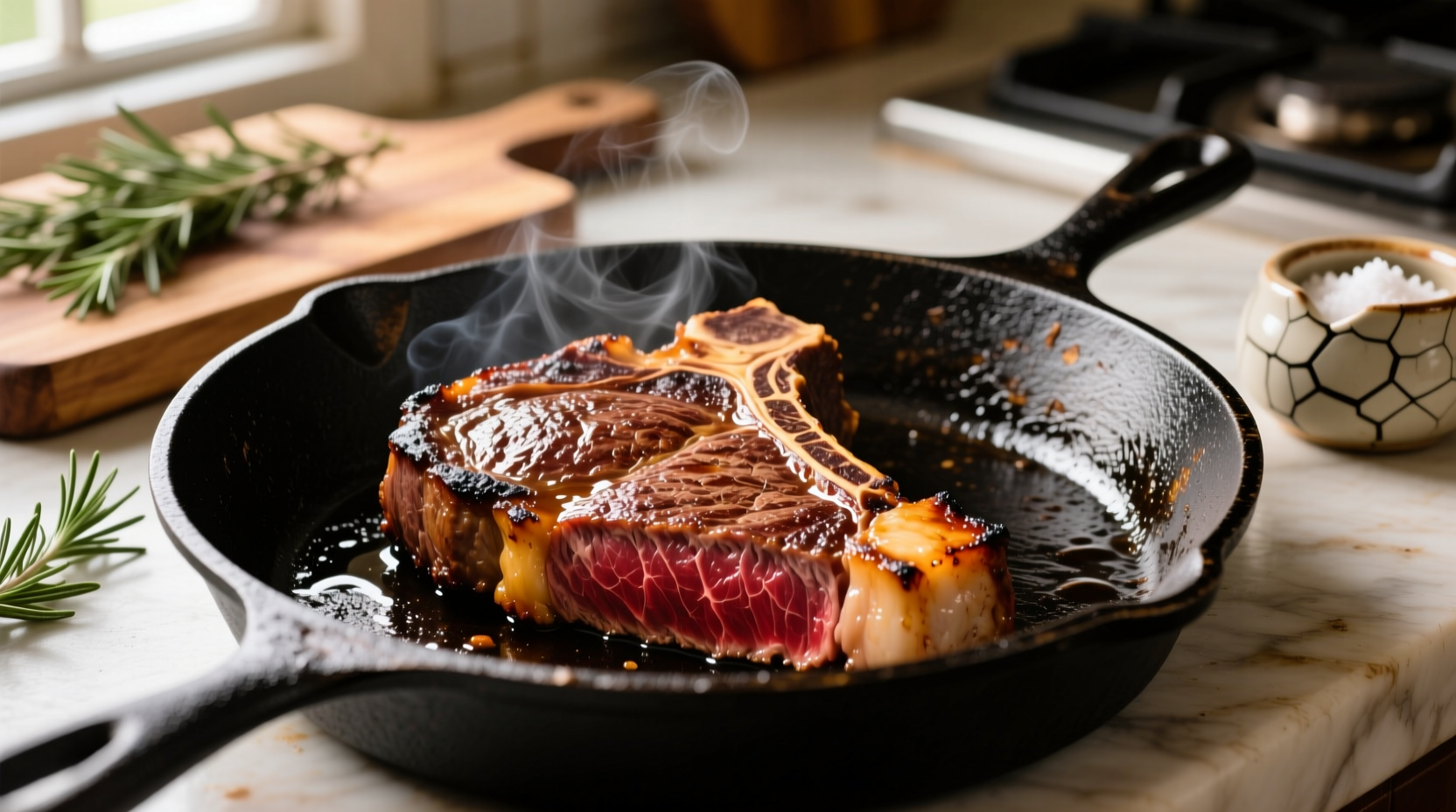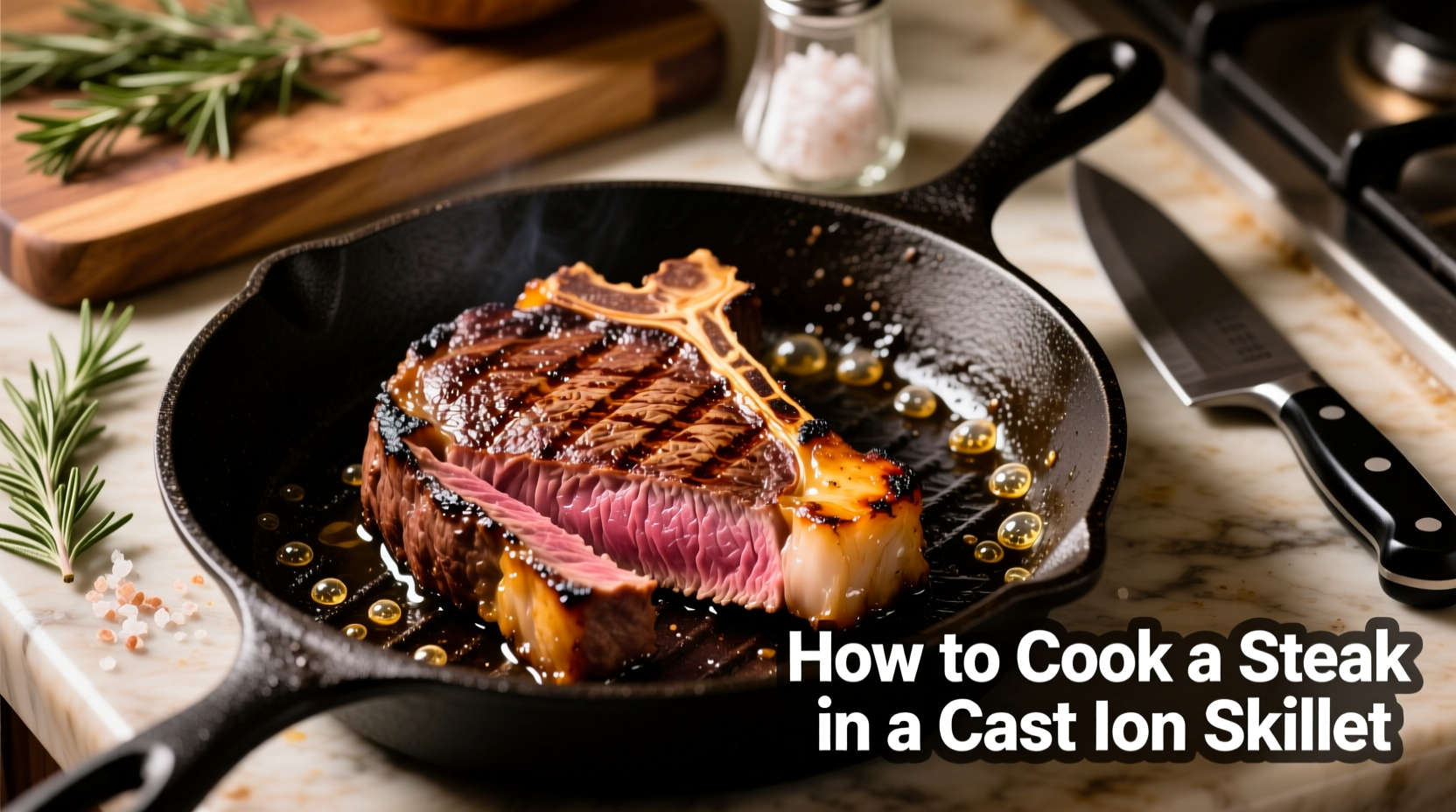The Cast Iron Steak Secret Every Home Cook Should Know
Nothing beats the perfect sear and juicy interior of a steak cooked in a properly seasoned cast iron skillet. This method delivers superior browning and heat retention compared to other pans, creating that coveted crust while maintaining tenderness. Professional chefs rely on cast iron for steak preparation because of its exceptional heat distribution and ability to maintain high temperatures without hot spots.
Why Cast Iron Outperforms Other Cooking Methods
Cast iron's thermal mass allows it to retain heat exceptionally well, crucial for achieving the Maillard reaction—the chemical process that creates complex flavors and that beautiful brown crust. Unlike stainless steel or non-stick pans, cast iron continues cooking your steak even after you remove it from heat, ensuring consistent results. According to culinary research from the Culinary Institute of America, cast iron reaches optimal searing temperatures (around 500°F) faster and maintains them more consistently than other common cookware materials.
Essential Equipment Checklist
- Well-seasoned cast iron skillet (10-12 inch)
- High smoke point oil (avocado, grapeseed, or canola)
- Instant-read thermometer (critical for accuracy)
- Metal spatula or tongs
- Baking sheet with wire rack for resting
Selecting the Perfect Steak for Cast Iron
Not all steaks respond equally well to cast iron cooking. Thicker cuts (1.5-2 inches) work best as they provide a larger window for achieving your desired doneness without overcooking. Here's a quick reference guide:
| Steak Cut | Recommended Thickness | Ideal Internal Temperature | Cooking Time (per side) |
|---|---|---|---|
| Ribeye | 1.5-2 inches | 125°F (rare) to 135°F (medium) | 4-6 minutes |
| New York Strip | 1.5 inches | 125°F (rare) to 135°F (medium) | 3-5 minutes |
| Filet Mignon | 2 inches | 120°F (rare) to 130°F (medium) | 5-7 minutes |
| Porterhouse/T-Bone | 1.5-2 inches | 125°F (rare) to 135°F (medium) | 4-6 minutes |
This temperature guide aligns with USDA food safety recommendations while accounting for carryover cooking during the resting phase. Remember that temperatures will rise 5-10°F after removing from heat.
Step-by-Step Cooking Process
Preparation (30-60 Minutes Before Cooking)
Remove your steak from refrigeration 30-60 minutes before cooking to bring it to room temperature. This critical step ensures even cooking throughout. Pat the steak completely dry with paper towels—moisture is the enemy of a good sear. Generously season with coarse salt and freshly ground black pepper on all sides, including the edges.
Skillet Preheating (The Make-or-Break Step)
Place your cast iron skillet on the stove over medium-high heat for 5-7 minutes until it's properly preheated. Test readiness by sprinkling a few drops of water—if they sizzle and evaporate immediately, you're ready. Add 1-2 tablespoons of high smoke point oil and swirl to coat the entire surface.

Cooking Your Steak (Timing is Everything)
Place the steak in the hot skillet away from you to avoid oil splatter. Press gently with a spatula to ensure full contact with the pan. Cook undisturbed for 3-5 minutes to develop a crust. Flip once using tongs and continue cooking, basting with melted butter, garlic, and herbs during the last 2 minutes for added flavor.
For thicker cuts (over 1.5 inches), finish in a 400°F oven after searing both sides. This technique, recommended by professional chefs, prevents overcooked exteriors while ensuring proper internal temperature.
Resting: The Non-Negotiable Final Step
Transfer your steak to a wire rack and let it rest for 5-10 minutes (longer for thicker cuts). This allows juices to redistribute throughout the meat. Cutting too soon releases precious juices onto your cutting board rather than staying in the steak.
Common Cast Iron Steak Problems and Solutions
Problem: Steak sticks to the pan
Solution: Ensure your skillet is properly preheated and the steak is completely dry before cooking. Wait until a good crust forms before attempting to flip.
Problem: Uneven cooking
Solution: Choose steaks with consistent thickness. If using a thinner end, fold it under or use the "tenting" technique with foil during cooking.
Problem: Burnt exterior but raw interior
Solution: Your heat is too high. Reduce temperature slightly and consider finishing in the oven for thicker cuts.
When Cast Iron Might Not Be Ideal
While cast iron excels for most steaks, there are specific scenarios where alternative methods might be preferable. For very thin cuts (under 1 inch), a stainless steel pan might provide better control. If you're cooking multiple thin steaks simultaneously, a grill might be more efficient. According to American Culinary Federation guidelines, cast iron requires careful temperature management that beginners might find challenging with delicate fish or very thin meats.
Pro Tips for Next-Level Results
- Freeze steak briefly (15-20 minutes) before cooking for cleaner edges
- Add smashed garlic cloves and fresh rosemary to the butter while basting
- For extra crust, sprinkle a pinch of sugar in the pan before adding steak
- Always clean cast iron while warm with minimal water and re-season after drying











 浙公网安备
33010002000092号
浙公网安备
33010002000092号 浙B2-20120091-4
浙B2-20120091-4